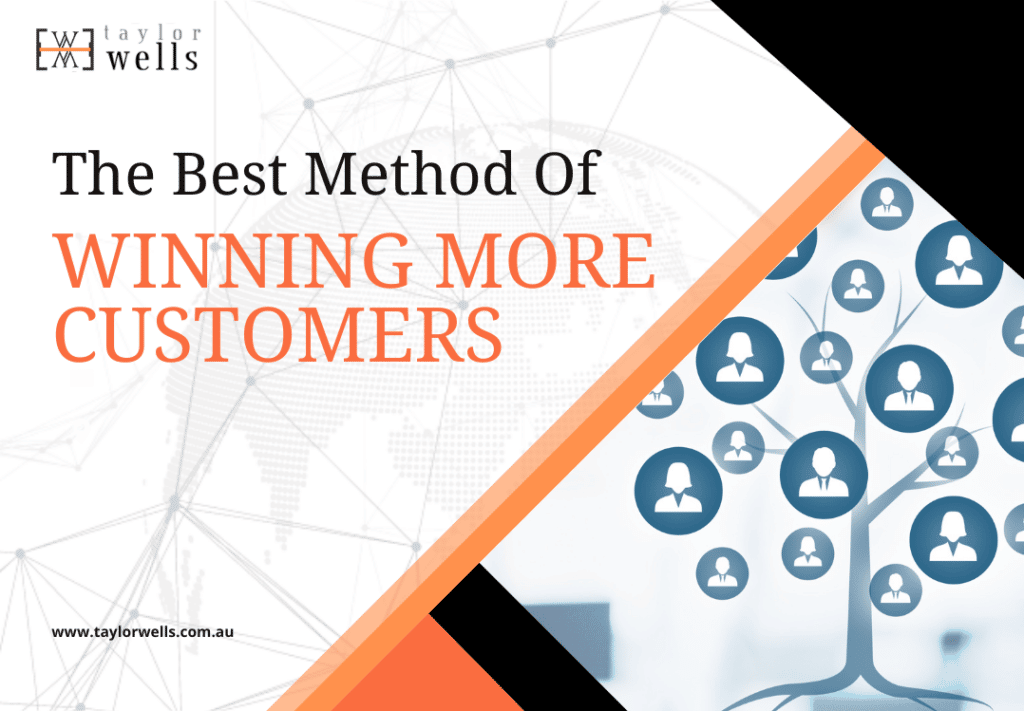
Finding A Target Market For Your Strategic Marketing Management Process 💁
The first crucial step to your strategic marketing management process is finding your target customer. Without properly identifying the customer base that you want to sell your product or service to, your marketing and sales strategies won’t be convincing. This is because everything you must put out should be geared towards your intended target market. Today, we will be discussing how to do this and more in our quick guide.
>Download Now: Free PDF The Best Method of Winning More Customers
Strategic Marketing Management Process – Why Choosing A Target Customer Matters
Some companies may be reluctant to narrow down a customer in fear of closing themselves off to certain people – but this isn’t what choosing a customer means.
Choosing the right customer involves deciphering many aspects of the process. The ideal “customer” is quite broad, to begin with, since customers include more than just individual purchasers, especially for B2B companies. This extends to procurement teams, retailers, suppliers, etc.
This is incredibly important to the act of defining your position and marketing strategy since all your decisions in these two aspects will be in service of the customer you have in mind. Narrowing down your customer does not mean you won’t be selling to other people that don’t necessarily fall under your targeted segment. Rather, having a specific customer in mind helps you focus your marketing and branding efforts.
Yahoo Vs Google – Why Is Choosing A Customer Important?
If your business is still on the fence about deciding who your customer is, there’s no better way to illustrate our point than a good example.
Take a look at Yahoo’s story. Yahoo began as a broad portal with fun themes and funky “emoticons.” However, in order to attract more users, they branched out to writing content, creating Yahoo Finance, Yahoo Movies, and Yahoo Sports. Eventually, their branding became confusing and cluttered.
Google, on the other hand, consistently focused on tech-oriented individuals. They invested heavily in research and coming up with cutting-edge technology and innovations. The result of the strategic emphasis on their target market was consistent aesthetic and output based on core values.
Everything google releases make sense in terms of design, function, and purpose. And as history has shown, Google quickly dominated Yahoo’s space.
How To Utilise Your Target Customers
Now, this strategy can prove to be incredibly successful – if done right. Here’s a comprehensive overview and structure that should set you on the right path. These are the three most critical aspects to get in order:
Identifying The Right Customer
This may seem like common sense, but many companies get this wrong. The right customer, more often than not, unlocks the most value – rather than the one that generates the most revenue. However, this will look different for every business. In order to know that you have chosen the right customer, you need to do some evaluation.
-
Alignment With Your Narrative
First, determine whether your target customer reflects the culture, narrative, and values of a company. This is important because, without alignment, you won’t be able to fully leverage your customer base to your advantage.
-
Understanding Your Resources
Second, understand your businesses resources and capabilities. Find what you excel at, especially if you offer a wide variety of products and services. This will help you position yourself and will make it easier to choose a narrower target market. Note that this may change over time as your business evolves. It’s okay to have to redesign your structures when old ones no longer work with your goals.
-
Potential For Profit
Lastly, determine whether the customer you have chosen has a good potential for profit. This does not always mean choosing the customer that currently makes the most profit. They may not be accurate indicators of your most important customers, or may not have large market power. Rather, choose the customer base that offers the most potential opportunities for you to utilise.
Understand Your Customer’s Values
Understanding your customer’s values ensures that you can target your messaging to their segment properly. Your target market has needs and it’s your job as a business to try and fill them.
This will take a lot of research. However, these days, it has become easier to analyse data with automated tools in order to gain the valuable insights you need. Advanced analytics and good feedback loops can tell you everything you need about your customer’s behaviour.
If you don’t have access to these things or want a more direct channel, then set up systematic dialogues with your customers. Big companies like FedEx or Henkle hold yearly summits and meetings between executives and customers to better understand their areas of improvement and best practices.
Understanding what they care about and what they need can unlock massive opportunities for you. For instance, you will be able to fine-tune products to better suit changing needs or ensure your marketing isn’t tone-deaf to current trends or issues. Staying on top of their values also helps you design products and services in the future that they don’t even realise they need.
Choose Your Business Model
Lastly, choose or define your business model. You can’t put the first two aspects into action if you don’t know your business’s configuration. This can change everything about the approach you should take. A good place to start would be to define your primary functions. These are five of the most common functions your business can utilise as a competitive selling point:
- Low Prices – This is when your business offering competes to fill the needs of those looking for the lowest prices on the market. Supermarkets are a good example of this.
- Local Value – This function serves customers who are looking for local products or that serves local tastes and preferences.
- Global Excellence – Brands defined by global excellence cater to customers looking for the best possible product regardless of location. Tech companies are major adopters of this function.
- Customer Service – Customer-service centric businesses like delivery or logistics companies have customers that highly value or prioritise good relations and excellent communications.
- Expertise – This function also includes technology-heavy companies like Google, but can also extend to professional service firms. Basically, it can be in any industry where customers seek those with the most expertise in the field.
〉〉〉 Get Your FREE Pricing Audit 〉〉〉
Bottomline – Strategic Marketing Management Process
In conclusion, choosing the right customer can have a massive positive impact on your business. In order to find the right customer, you need resources to utilise research, data, and feedback loops. Though it can seem like a lot of work, it’s worth defining and building a strong, consistent brand or marketing image for your target customer base.
For a comprehensive view on maximizing growth in your company,
Download a complimentary whitepaper on How To Drive Pricing Strategy To Maximise EBIT Growth.
Are you a business in need of help to align your pricing strategy, people and operations to deliver an immediate impact on profit?
If so, please call (+61) 2 9000 1115.
You can also email us at team@taylorwells.com.au if you have any further questions.
Make your pricing world class!
Related Posts
Leave a Reply Cancel reply
Categories
- marketing strategy (26)
- Organisational Design (14)
- Podcast (114)
- Pricing Capability (87)
- Pricing Career Advice (10)
- Pricing Recruitment (19)
- Pricing Strategy (292)
- Pricing Team Skills (13)
- Pricing Teams & Culture (25)
- Pricing Transformation (48)
- Revenue Model (25)
- Sales Effectiveness (27)
- Talent Management (7)
- Technical Pricing Skills (35)







